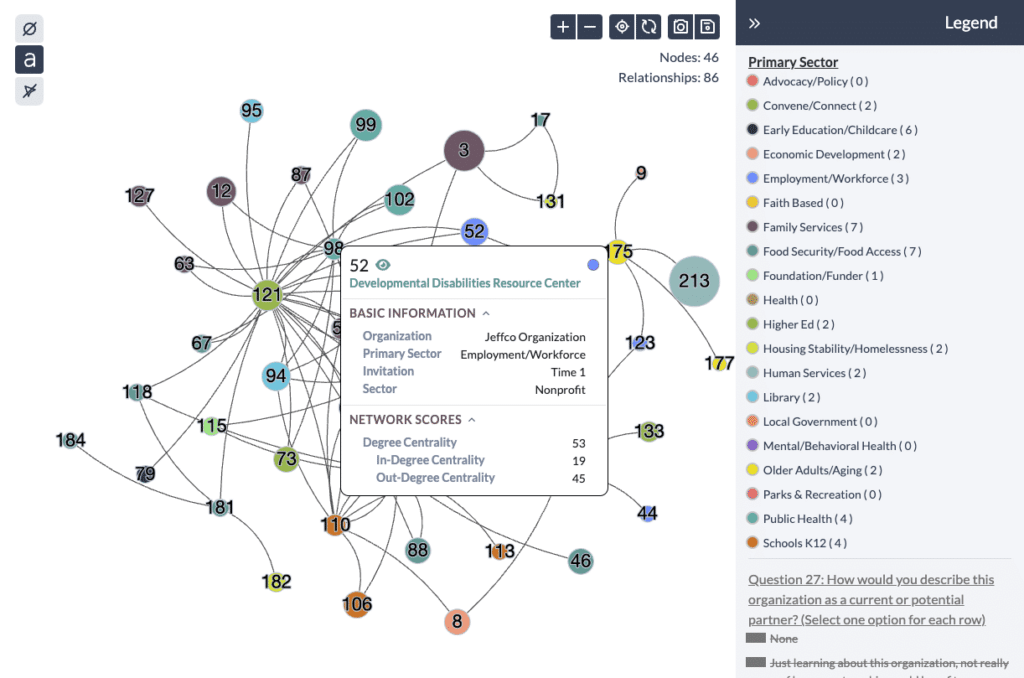In the face of increasingly complex healthcare challenges, inter-organizational collaboration is often touted as the key to success. But what does it truly take to build and lead effective collaborations across organizational, governmental, and sectoral boundaries? A newly published peer-reviewed article, Leading Public Sector Interorganizational Collaboration in Healthcare: Lessons from the Intersection of Climate and Health (Zidulka & Kajzer Mitchell, 2025), sheds light on this critical question.
The study, published in Healthcare Management Forum, draws on organizational literature and empirical research from collaborations focused on climate resilience in healthcare. The findings offer four key guidelines for healthcare leaders navigating the intricacies of inter-organizational collaboration. These insights are particularly relevant for those using network-based approaches—like PARTNER CPRM—to strengthen public health and community partnerships.
Table of Contents
The Challenge of Interorganizational Collaboration in Healthcare
The authors emphasize that many healthcare challenges, such as climate resilience, public health crises, and social determinants of health, are wicked problems—complex, multifaceted issues that require cooperation between diverse stakeholders. However, leading collaborative initiatives is fraught with difficulties, including:
- Lack of clarity around goals, roles, and governance structures.
- Differences in values, beliefs, and institutional priorities.
- Power imbalances and bureaucratic constraints.
- The challenge of building trust among partners with varying levels of familiarity and investment in the issue.
Despite these barriers, successful collaboration can lead to deeper problem understanding, mutually beneficial solutions, and more resilient healthcare systems.

Get our monthly newsletter with resources for cross-sector collaboration, VNL recommended reading, and upcoming opportunities for engaged in the “network way of working.”
Four Key Guidelines for Successful Collaboration
The study outlines four major guidelines to enhance inter-organizational collaboration in healthcare, particularly in the context of climate resilience.
1. Analyze Initial Conditions and Set Realistic Expectations
The conditions under which a collaboration is initiated significantly influence its success. Leaders should assess:
- The urgency of the issue among stakeholders.
- Policy mandates and political support.
- The strength of existing relationships.
- Organizational structures that either facilitate or hinder collaboration.
For example, in Victoria, Australia, where the government mandated climate action, leaders were able to mobilize partners more effectively than in jurisdictions without clear directives. If initial conditions are unfavorable—such as when key stakeholders do not yet recognize the problem—leaders should focus on building collaborative capacity rather than expecting immediate, large-scale outcomes.

2. Use Multiple Strategies for Trust-Building
Trust is the foundation of successful collaboration, but it must be nurtured in multiple ways:
- Interpersonal trust: Building relationships through regular communication, informal interactions, and shared experiences.
- Procedural justice: Ensuring transparent, democratic decision-making to establish credibility and fairness.
- Demonstration of outcomes: Even small, early successes—such as co-developing a shared vision—can reinforce trust and commitment.
Leaders should integrate structured governance mechanisms to ensure procedural fairness, as stakeholders quickly disengage if they perceive a lack of transparency.
3. Ensure Adequate Resourcing for Internal Staff and External Partners
Collaboration is time-intensive, yet often underfunded. Many initiatives rely on the “invisible labor” of committed employees who work beyond their formal responsibilities. Sustainable collaboration requires:
- Dedicated staffing and funding. Employees should have protected time and resources for collaboration efforts.
- Compensation for external partners. Smaller organizations, Indigenous groups, and marginalized communities must be supported financially to ensure equitable participation.
Failing to allocate resources to relationship-building can lead to burnout and ineffective partnerships.
4. Build Indigenous Collaboration Into Governance Structures
Several interviewees emphasized the need to integrate Indigenous perspectives into climate resilience and healthcare strategies. This means going beyond consultation and ensuring Indigenous leaders have decision-making authority. The most successful models embed Indigenous representatives into governance structures from the start.
For example, New South Wales, Australia, has successfully integrated shared governance models into mainstream health units, positioning Indigenous leadership at the heart of decision-making.

How Network Science Can Support Collaborative Leadership
The findings from this study reinforce the importance of network science and data-driven collaboration tools, like PARTNER CPRM, to strengthen interorganizational partnerships. Here’s how:
- Mapping Collaborative Conditions: PARTNER CPRM helps organizations assess the strength of existing partnerships and identify gaps in collaboration.
- Measuring Trust and Value: The platform’s Trust and Value Scores allow leaders to monitor partnership quality and adjust strategies accordingly.
- Tracking and Strengthening Relationships Over Time: By visualizing how partnerships evolve, organizations can ensure sustained engagement and resource allocation.
With tools like PARTNER CPRM, healthcare leaders can move beyond siloed decision-making and foster more resilient, data-informed collaborations.
Learn More About Network-Based Collaboration
Are you looking to enhance your organization’s collaborative capacity? PARTNER CPRM helps public health and healthcare organizations map, measure, and strengthen inter-organizational networks.
Learn more by requesting a complimentary web demo or creating a free account.

Conclusion
Inter-organizational collaboration is essential for addressing complex healthcare challenges, but it is not without its hurdles. This study provides actionable insights for leaders striving to build meaningful partnerships, especially in response to climate change and other public health crises.
By aligning strategies with initial conditions, investing in trust-building, securing adequate resources, and embedding Indigenous leadership in governance structures, organizations can foster more effective collaborations. Tools like PARTNER CPRM further support this work by providing the data-driven insights needed to navigate the complexities of inter-organizational networks.
As healthcare systems continue to face unprecedented challenges, a strategic, network-based approach to collaboration will be key to building resilience and driving meaningful change.






